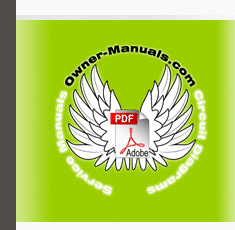|
|
|
Categories
|
|
Information
|
|
Featured Product
|
|
|
 |
|
|
There are currently no product reviews.
 ;
some of the writing is a bit blur but the part in the schmatic was great and i have fixed the machine thanks
 ;
Well.. I'd searched for this manual and although I found many copies online I was pleased to find your website with a well balanced pricing system and easy to search and follow links. That together with the very quick response time was just what I was looking for.. being a very impatient tech.. ;-) I had the service manual in front of me within a short time.
Bookmarked.. and you can bet I will always come here first for my service & user manuals..
best regards
Ed(Tony) Foley
G7WHK
 ;
I will definitely be back for more information when I need it.
 ;
The service manual when downloaded and printed out was clear and easy to read. I would have liked to have been able to enlarge some details, but this was not possible as the file permissions did not allow this. The service was very good. The time taken from placing my order to downloading the document was only a few minutes.
 ;
The manual is useful for trouble shooting for an old instrument. It saved money,and let me enjoy DIY.
Precautions during Servicing
A. Parts identified by the ( # ) symbol are critical for safety. Replace only with part number specified. B. In addition to safety, other parts and assemblies are specified for conformance with regulations applying to spurious radiation. These must also be replaced only with specified replacements. Examples: RF converters, RF cables, noise blocking capacitors, and noise blocking filters, etc. C. Use specified internal wiring. Note especially: 1) Wires covered with PVC tubing 2) Double insulated wires 3) High voltage leads D. Use specified insulating materials for hazardous live parts. Note especially: 1) Insulation Tape 2) PVC tubing 3) Spacers 4) Insulators for transistors. E. When replacing AC primary side components (transformers, power cord, etc.), wrap ends of wires securely about the terminals before soldering. F. Observe that the wires do not contact heat producing parts (heatsinks, oxide metal film resistors, fusible resistors, etc.) G. Check that replaced wires do not contact sharp edged or pointed parts.
H. When a power cord has been replaced, check that 5~6 kg of force in any direction will not loosen it. I. Also check areas surrounding repaired locations. J. Be careful that foreign objects (screws, solder droplets, etc.) do not remain inside the set. K. Crimp type wire connector When replacing the power transformer in sets where the connections between the power cord and power transformer primary lead wires are performed using crimp type connectors, in order to prevent shock hazards, perform carefully and precisely the following steps. Replacement procedure 1) Remove the old connector by cutting the wires at a point close to the connector. Important: Do not re-use a connector (discard it). 2) Strip about 15 mm of the insulation from the ends of the wires. If the wires are stranded, twist the strands to avoid frayed conductors. 3) Align the lengths of the wires to be connected. Insert the wires fully into the connector. 4) Use the crimping tool to crimp the metal sleeve at the center position. Be sure to crimp fully to the complete closure of the tool. L. When connecting or disconnecting the TV/DVD connectors, first, disconnect the AC plug from AC supply socket.
1-3-3
TD204IMP
|
|
 |
> |
|
